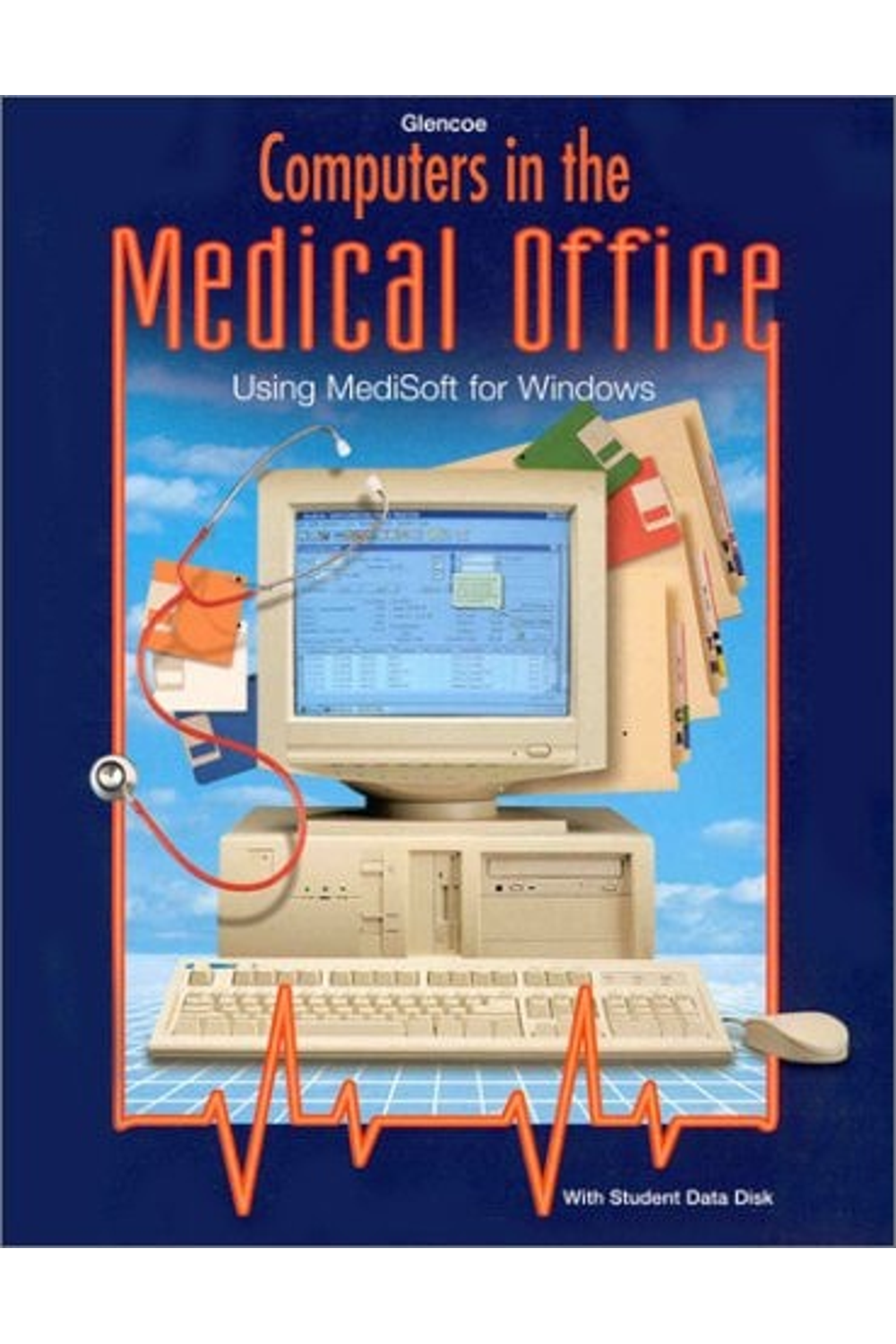Prepare your medical office assistants for success with “Computers in the Medical Office: Using Medisoft for Windows, 2nd Edition,” a practical guide by Cynthia Newby, published by McGraw-Hill in 1999. Although from 1999, this book offers valuable insights into the fundamental concepts of computer usage within a medical office. Learn to master Medisoft for Windows through hands-on exercises, optional computer basics and real-world simulations. Gain proficiency in patient data entry, appointment scheduling, billing, and report generation. Even though technology has evolved, the core principles taught in this book provide a solid understanding of the fundamentals of working with patient software. A great foundational tool despite its age! Includes Windows Diskette.
Computers in the Medical Office: Using Medisoft for Windows (Book with Diskette for Windows)
17,14 $
In stock
Description
This practical text-workbook prepares medical office assistant students to use the new and very popular MediSoft Patient Accounting for Windows. The three-part text includes an op-tional section on computer basics, followed by MediSoft train-ing, and a series of real-world simulations. Students will learn to input patient information, schedule appointments, handle billing, produce medical office lists and reports, and other tasks.
Prepare your medical office assistants for success with the second edition of "Computers in the Medical Office: Using Medisoft for Windows" by Cynthia Newby. This comprehensive text-workbook, published by McGraw-Hill Science/Engineering/Math in 1999, is specifically designed to equip students with the practical skills needed to navigate the then-popular Medisoft Patient Accounting software. Although published in 1999, the book is still useful as it teaches the fundemental concepts of computer usage within the medical office. This hands-on resource goes beyond simple software tutorials. Newby expertly guides students through the intricacies of Medisoft for Windows, offering a three-part structure that caters to various learning levels. The book begins with an *optional* section dedicated to computer basics. This ensures that even students with limited prior experience can grasp the fundamental concepts necessary for success. The book them transitions into detailed MediSoft training, covering all essential functions of the software. However, the true strength of this text lies in its series of real-world simulations. Students don't just learn *about* the software; they *use* it in realistic scenarios mirroring the daily operations of a medical office. They will master vital tasks like inputting patient information accurately, efficiently scheduling appointments to optimize workflow, handling billing procedures with precision, generating essential medical office lists and reports for informed decision-making, and performing a wide range of other critical administrative duties. The second edition includes an updated diskette for Windows, providing students with a hands-on experience, though compatibility with modern computers is not guaranteed. While technology has undoubtedly evolved since 1999, the core principles of medical office management and patient accounting remain relevant. This book provides a solid foundation in those principles, coupled with practical experience in a widely-used software program of the time. "Computers in the Medical Office" is an invaluable resource for educators seeking a comprehensive and practical training tool for their medical office assistant students. Though this book is older it gives the reader or student a step by step guide to the basics of computing in a medical environment. Give your students the edge they need to excel in today's healthcare environment with this time-tested learning solution. This book is especially helpful for those seeking to modernize an older office and is looking for older hardware/software to run it on. This books covers many topics still relevant in todays medical offices.
Additional information
| Authors | |
|---|---|
| Binding | |
| Condition | |
| ISBN-10 | 0028019903 |
| ISBN-13 | 9780028019901 |
| Language | |
| Pages | 305 |
| Publisher | |
| Year published | |
| Weight | 680 |
| Edition | 2 |
| Dewey decimal | 651/.961/0285 |
SKU: G-9780028019901-3
Categories: MEDICAL OFFICE MANAGEMENT, OFFICE PRACTICE_AUTOMATION
- Additional information
- Currencies
- USD – United States dollar
- EUR – Euro
- GBP – Pound sterling
- CNY – Chinese yuan
- BRL – Brazilian real
- MXN – Mexican peso
- JPY – Japanese yen
- PHP – Philippine peso
- THB – Thai baht
- PLN – Polish złoty
- CAD – Canadian dollar
- MYR – Malaysian ringgit
- AUD – Australian dollar
- TWD – New Taiwan dollar
- CZK – Czech koruna
- SEK – Swedish krona
- HUF – Hungarian forint
- ILS – Israeli new shekel
- CHF – Swiss franc
- HKD – Hong Kong dollar
- DKK – Danish krone
- SGD – Singapore dollar
- NOK – Norwegian krone
- NZD – New Zealand dollar

